Struggling to decide between a shiny new CNC machine and a budget-friendly used one? The wrong choice can drain your resources and stall production. I’m here to help you navigate this critical decision for your workshop.
Choosing between new and used CNC machines really comes down to your specific budget, what you need to produce, and how much risk you’re comfortable with. New machines give you the latest technology and full support, but they cost more and you might wait longer to get one. Used machines are easier on the wallet and often available right away, but they might need more upkeep and you won’t have as many custom options.
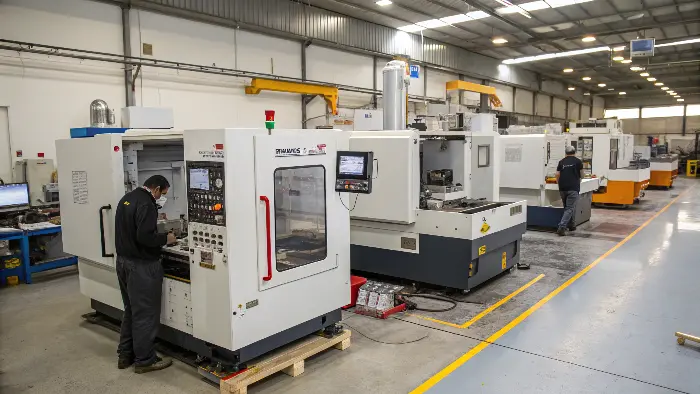
Making this choice can feel overwhelming. You want the best value, but you also need reliability and performance. It’s a big investment, and you want it to pay off. Let’s break down the key things you need to think about. This way, you can make a smart decision that will help your business for years. I’ve been through this process many times, both for my own needs and when advising clients like Alex, an engineer who needs top precision.
What is the difference between old and new CNC machines?
Are you a bit confused about what really separates a brand-new CNC from a pre-owned one, apart from just the price? This uncertainty can make your big investment feel like a bit of a gamble. I’ll help clear up the main distinctions for you.
New CNC machines come with the very latest technology, full warranties, and direct support from the manufacturer, but they do have higher prices and you might have to wait longer for delivery. Older, or used, machines are generally cheaper and you can get them faster. However, they might not have all the advanced features, will likely show some wear, and often come with limited or no warranty.
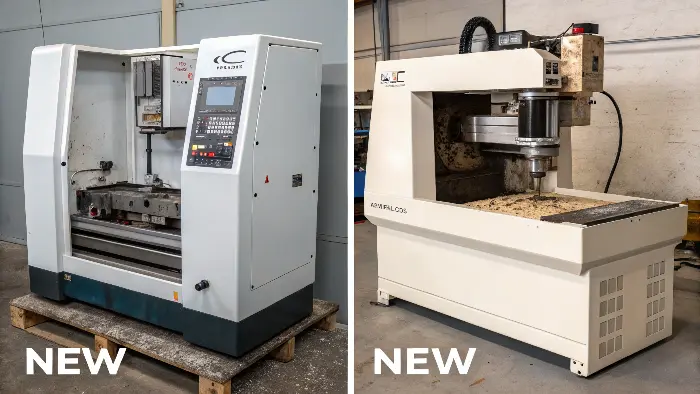
When I talk to engineers like Alex, the first thing we usually discuss is what they really need from the machine. It’s easy to get excited by all the features of a new model.
New machines often come packed with the latest controllers, faster processing speeds, and sometimes, more sophisticated software integration. This can be very important if you’re making complex parts or have high-volume production. For instance, a new 5-axis machine might have advanced collision avoidance that an older model simply doesn’t offer.
But, an older, well-maintained 3-axis mill can still be a real workhorse for simpler jobs. The main difference often lies in the extra ‘bells and whistles’ and the time it takes to learn how to use them.
Key Distinctions: New vs. Used CNC
| Feature | New CNC Machine | Used CNC Machine |
|---|---|---|
| Technology | Latest software, advanced control systems | Older technology, may lack some new features |
| Condition | Pristine, no operational hours | Varies, will have some wear and tear |
| Price | Higher initial investment | Lower initial investment |
| Warranty | Full manufacturer warranty (typically 1-2 years) | Limited or no warranty, often sold ‘as-is’ |
| Support | Comprehensive manufacturer support & training | Support may be limited or rely on third-parties |
| Lead Time | Can be several weeks or even months | Often immediately available or short notice |
| Customization | High, can often be built to specific needs | Limited, what you see is what you get |
Think about the machine’s history too. A new machine starts its working life with you. A used one has already put in some hours, and its past use will affect its future. We’ll talk more about how long machines should last a bit later.
How to choose the right CNC machine?
Feeling overwhelmed by the huge number of CNC machine options out there? If you choose the wrong one, you could waste a lot of money and create serious production bottlenecks. I’ll guide you through the steps to select the perfect machine for your specific needs.
To choose the right CNC machine, first, you need to clearly define what you’ll use it for. Think about the materials you’ll cut, how complex your parts are, the precision you need, and how many parts you’ll make. Then, look at your budget, how much space you have, and the technical skills of your team. Matching these factors to the machine’s specifications is the key to a good choice.
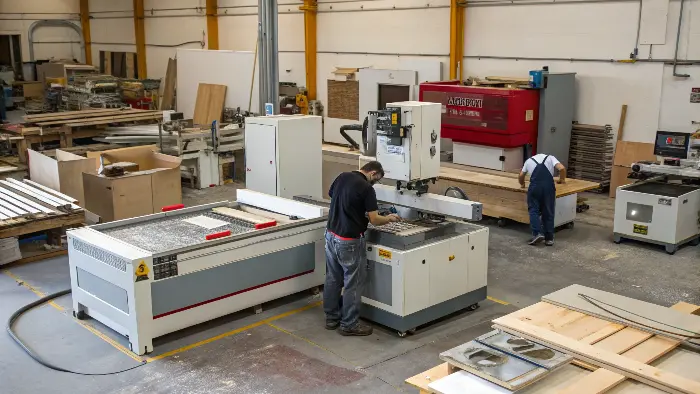
Choosing the ‘right’ CNC machine, whether it’s new or used, always starts with a really good look at what you actually need. I always ask my clients, including engineers like Alex who design high-tolerance robotic parts, to make a detailed list.
Understanding Your Production Needs
What materials will you mostly be machining? Is it aluminum, steel, plastics, or something tougher like titanium? The machine’s spindle power, its overall stiffness, and the type of tooling system it has must be right for your materials.
What’s the typical size and complexity of the parts you plan to make? This will tell you the machine’s required work envelope – that’s the X, Y, and Z travel. It also helps decide if you need a 3-axis, 4-axis, or a more complex 5-axis machine. For Alex’s components, which demand precision down to ±0.01mm, a very rigid and accurate machine is absolutely essential.
Budget, Space, and Skills
Also, think about your production volume. Are you making prototypes, small batches, or are you aiming for mass production? This affects whether you need automation features, like automatic tool changers, and how robust the machine needs to be. Don’t forget to measure your workshop space. And be honest about the skill level of your operators. A very complex machine might be too much if your team isn’t trained to use and maintain it properly. It’s about finding the right fit for your whole operation.
What to look for when buying a used CNC machine?
Are you tempted by the lower price tag of a used CNC machine but worried about hidden problems that could surface later? Buying a machine that turns out to be a ‘lemon’ can be a very expensive mistake. I’ll share my personal checklist for inspecting a used machine thoroughly.
When you’re buying a used CNC machine, it’s very important to inspect its physical condition carefully. You should also check all the maintenance records, run some test parts if you can, and make sure the controller is working correctly. Pay close attention to the spindle hours, any backlash in the axes, and the condition of the way covers and lubrication systems. If possible, get an expert to look at it with you.
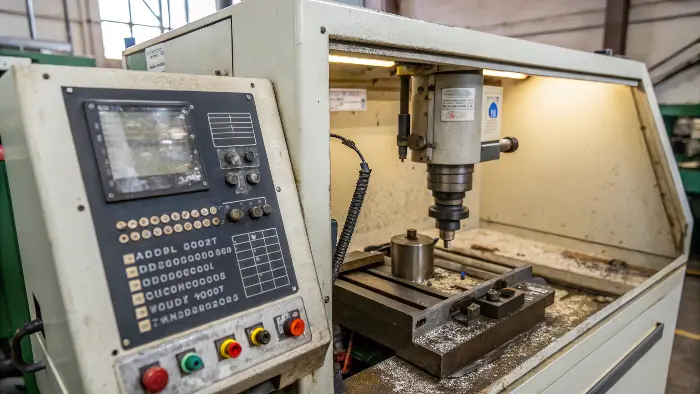
If you’re thinking about getting a used CNC machine, doing your homework is your best protection. I’ve seen people get fantastic deals on used equipment. But I’ve also seen others end up with a machine that has a lot of problems, basically inheriting someone else’s headaches.
Physical Inspection and Maintenance History
The very first step is a thorough physical inspection. Look carefully for any signs of past crashes, like dents or repaired areas. Check for excessive wear on the ball screws or linear guides. See how well the way covers have protected the important moving parts. Always ask for maintenance logs. A machine with a well-documented service history is usually a much safer bet. It shows the previous owner cared for it.
Operational Tests and Controller
Next, if it’s at all possible, you need to see the machine run. I always tell my clients to try and machine a test part. Pick something that will push its capabilities a little, not just a simple cut. Listen for any unusual noises coming from the spindle or the axes when they move. Check for backlash in the screws – this can really affect accuracy. How old is the controller? Are spare parts and support still available for that specific model and its controller? Some older controllers can be very difficult and costly to repair or replace if something goes wrong. For someone like Alex, who absolutely needs tight tolerances for his robotic components, verifying the machine’s current accuracy is the most important thing. Don’t just take the seller’s word for it. If you can, bring a dial indicator and a precision test bar to check things yourself.
How long should a CNC machine last?
Are you wondering about the typical lifespan of a CNC machine before you make such a big investment? An unexpected early breakdown can really cripple your workshop’s operations and finances. I’ll explain the main factors that determine how long a CNC machine will keep working well.
A well-maintained CNC machine can easily last 10 to 20 years, and sometimes even longer. Its longevity really depends on its original build quality, how intensively it’s used (like hours per day and the types of materials machined), how well you stick to maintenance schedules, and whether spare parts are still available for older models.
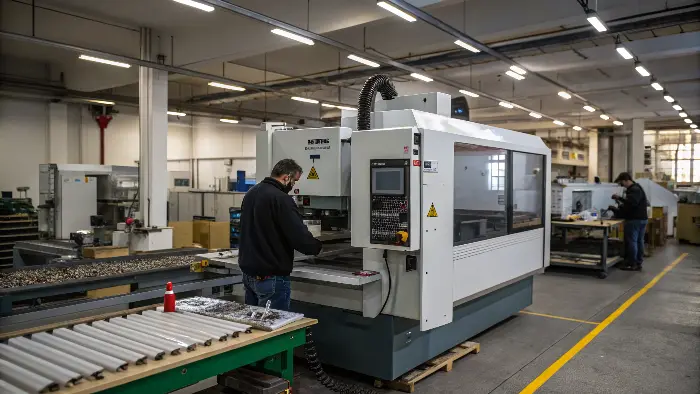
This is a question I get asked a lot, especially when clients are trying to compare the total cost of a new machine versus a used one. There isn’t one single answer that fits every machine, but a quality CNC machine, whether it’s a milling machine or a lathe, is generally built to last a long time. Many machines from well-known, reputable brands can run reliably for 15, 20, or even more years if they are properly cared for.
Build Quality and Usage Intensity
The key factors that influence lifespan are the initial build quality of the machine, how heavily it’s used in daily operations, and, most importantly, the consistency of its maintenance. A machine that’s running light-duty jobs on aluminum for 8 hours a day will naturally last longer than a machine that’s cutting tough steels or other hard materials 24 hours a day, 7 days a week. The stress on the components is just very different.
The Critical Role of Maintenance
Regular preventive maintenance is absolutely crucial. This means things like regularly checking and topping up lubrication, replacing filters on schedule, inspecting belts and wipers, and generally keeping the machine clean from chips and coolant residue. I’ve personally seen machines that look quite old but still hold very tight tolerances because their owners were meticulous about maintenance. On the other hand, even a relatively new machine can be run into the ground quickly through neglect and abuse. Also, you need to think about technological obsolescence. The mechanical parts of an old machine might still be perfectly fine, but if its controller is very outdated and no longer supported by the manufacturer or third parties, the machine’s useful life might be shorter from a practical, operational standpoint. It becomes hard to integrate or repair.
Conclusion
Choosing new or used CNC equipment means you have to balance cost, the latest technology, and how much risk you can handle. Take time to carefully look at your specific production needs and your budget. Always do your homework, especially if you are considering a used machine. This careful approach will help ensure you make a valuable, long-lasting investment for your workshop.


